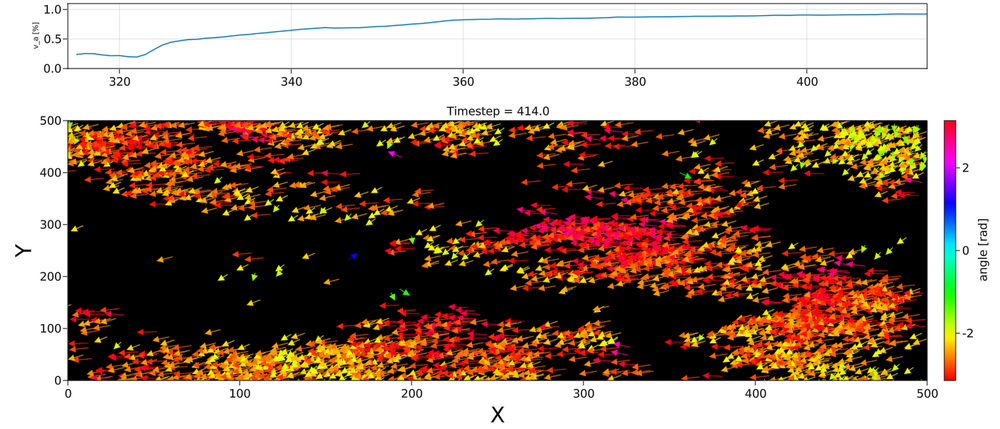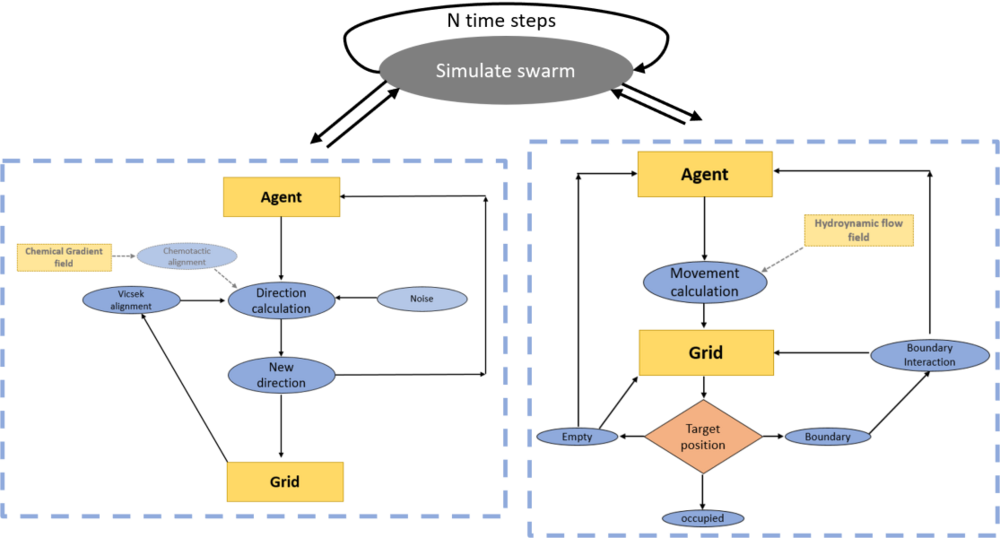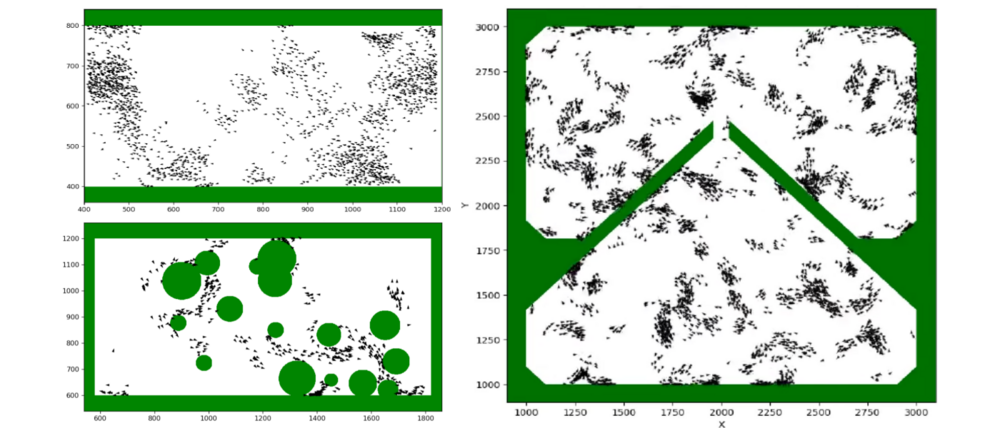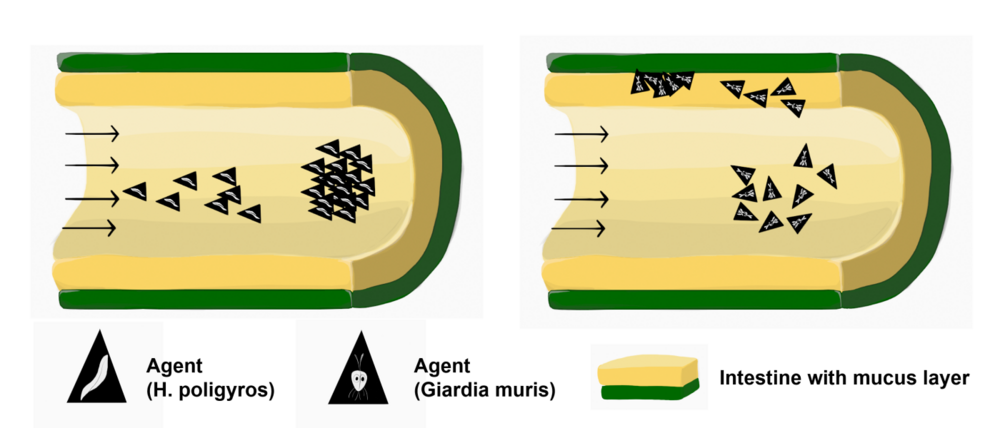P7 - Data-driven agent-based modelling of Trypanosoma collective behaviour
In silico Trypanosoma collective motion
The unicellular parasite Trypanosoma brucei exhibits swarming with linear alignment in the tsetse fly midgut. Colonies of the insect-form of the parasite show radial projections in in vitro social motility assays on agarose gel. Quantitative characterisations of the collective behaviour are available, but the underlying mechanisms as well as the link to the in vivo situation require further investigations. We will address these questions by data-driven development of an agent-based model for collective behaviour derived from the Vicsek model (Vicsek et al. 1995). Considering physical as well as chemical agent-agent and agent-boundary interactions, we will test our main hypothesis that collective motion of trypanosomes can be reproduced by a combination of negative auto-chemotaxis and parasite alignment at the boundary. Our project contributes to a more detailed understanding of Trypanosoma locomotion and the physics of the interaction with boundaries in the microenvironment. In addition, it promotes similar studies in other parasitic systems.
Implementation
A computationally efficient implementation of the model in the programming language Julia allows simulations for agent numbers comparable to the number of parasites in the experiments. Hence, a direct, quantitative comparison of the simulation results to experimental data from other projects in the priority programme is feasible. The model quality in terms of the approximation of physical principles is tested through interactions with projects that develop detailed hydrodynamic simulations.
Different geometries
We consider different geometries with constrictions and obstacles to be able to represent a wide variety of biological situations, including the gut of the tsetse fly. Analysis of our model in this setting provides insight into the sensitivity of the collective behaviour of trypanosomes to changes of the environment geometry.
Application to other parasites
To form the basis for a wider adoption of our model, we collaborate with projects in the Priority Programme that investigate the movement patterns and interactions of large groups of individuals, e.g. Heligmosomoides poligyrus or Giardia muris in the small intestine. Testing our modelling approach on these systems helps to further our understanding of general physical concepts in parasitology.










